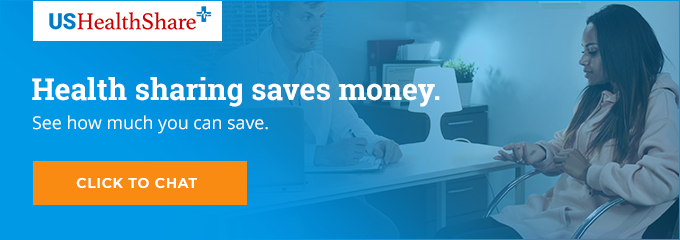About one-third of Americans who are currently taking prescription drugs say out-of-pocket expenses for their medications have increased in the recent past, according to a Consumer Reports survey. Some say their medications have spiked in price by at least $100.
That’s unfortunate because the high costs of prescription medication can be a barrier to receiving the proper medications needed. In the same poll, 12 percent who have seen an increase in out-of-pocket costs are less likely to fill their prescription, which can have a negative effect on their health.
Health insurance plans may help to offset the out-of-pocket expenses for prescription medications, but insurers often encourage policyholders to opt for more expensive prescription drug formularies that require higher out-of-pocket costs. Plus, the overall cost of health insurance continues to rise, which is having a significant effect on the average American’s household budget.
Health Sharing Programs as an Alternative to Traditional Health Insurance
Luckily, there are alternatives to traditional health insurance in the form of health care sharing programs. With a health sharing program, members contribute to a pool of funds based on the specific plan they have chosen, and the health share ministry coordinates these voluntary contributions.
The pool of funds can then be accessed by members when a medical expense is incurred, so all members are supported financially for medical costs, including those for prescription medications.

Not all health share programs include prescription medication as part of their eligible medical expenses, however. The way in which the costs of prescription drugs are handled may also differ depending on the health share ministry you chose. For instance, some health share programs follow a reimbursement model, which means the patient must first pay for their medication out-of-pocket and then wait to be reimbursed.
There are programs available that pay the pharmacy directly, however. This makes the payment for prescription medication much more convenient and affordable, as there’s no need to front the funds for the medication. Clearly, this is a much more attractive model. One example of a health sharing program that follows this model of payment for prescription medication is USHealthshare.
Do Your Research
Because prescription drug costs are so high, it just makes sense to consider how your chosen method of handling overall healthcare costs will account for prescription drug costs. Will traditional health insurance be the best bet for your family? Will a health sharing program be a better fit? Take some time to count the real cost of your decisions and examine all your options before you make your choice. You may be surprised to learn that health sharing saves more money than you might think.

